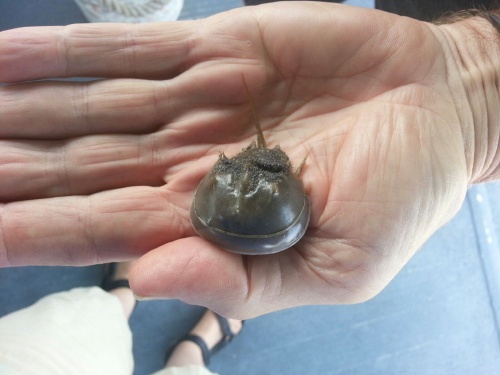Juvenile horseshoe crabs molt sixteen times throughout the first ten years. Then they remain in the last, harder shell for the rest of their lives. It is thought that the female may molt one year longer than the male, since their body size is up to three times larger than males. Other than size, the other obvious morphological difference between males and females is the adaptation of the clasper claw on the front legs of the male, which allow the male to hook on to the back of the female’s shell when it’s time to mate. Juveniles do not show this adaptation before the final molt.
September 2, 2013
Thank you so much, Blue Ocean Institute, for the wonderful time I had on the boat. I was so lucky to be able to experience something so extraordinary. I learned so much and made amazing experiences and memories of the marine life and also the people. The other crew members were so nice and helpful and we had so much fun as a team. I really hope I can come back next year and help out. I’m going to miss this a lot! Thank you again for such a memorable summer and for all the great support.
Charlotte Schmidt
Today’s Observations
Air temp: 75 degrees F
Sky conditions: overcast
Wind speed: 8-12 mph, gentle breeze
Wind direction: SE
Tide: outgoing
What we caught (12:00 boat tour):
Beach: mud snails, fiddler crabs (no males), hermit crabs
Net: mud snails, striped killies, a lot of moon jellies and comb jellies
Crab trap: spider crabs, 1 blue claw crab, codium fragile, whelks
Blue claw crab trap: 1 blue claw crab
What we caught (2:00 boat tour):
Beach: hermit crabs, mud snails, 3 baby horseshoe crabs, fiddler crabs (males and females)
Net: silver sides, striped killies, sheepshead minnows
Crab trap: spider crabs, whelks
Contributed by BOI Intern Charlotte Schmidt

